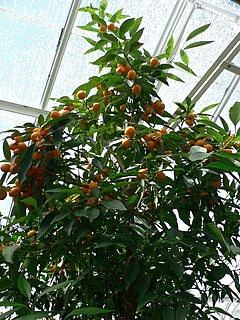Related Research Articles
Charles Baron Clarke was a British botanist. He was born at Andover, the eldest son of Turner Poulter Clarke. He was educated at King's College School, London, and at Trinity and Queens' Colleges, Cambridge. He began the study of law at Lincoln's Inn in 1856 and was called to the bar in 1860. He lectured in mathematics at Presidency College, Calcutta, from 1857 to 1865. Clarke was Inspector of Schools in Eastern Bengal and later of India, and superintendent of the Calcutta Botanical Garden from 1869 to 1871. He retired from the Indian Civil Service in 1887. He was president of the Linnean Society from 1894 to 1896, and was elected a fellow of the Royal Society in 1882. He worked at Royal Botanic Gardens Kew until his death in 1906.
Haesselia is a genus of liverworts in the family Cephaloziaceae. It contains the following species :
Richard Eric Holttum was an English botanist and author.
Erikssonopsis is a genus of fungi in the family Helotiaceae. This is a monotypic genus, containing the single species Erikssonopsis ericae.
Grovesia is a genus of fungi in the family Helotiaceae. This is a monotypic genus, containing the single species Grovesia pulchella.
Follmanniella is a lichenized genus of fungi in the family Roccellaceae. A monotypic genus, it contains the single species Follmanniella scutellata.

Gillotia is a genus of fungi in the family Mycosphaerellaceae.
Diederimyces is a genus of fungi in the family Verrucariaceae. A monotypic genus, it contains the single species Diederimyces fuscideae.
Cesatiella is a genus of fungi in the family Hyponectriaceae.
Brooksia is a genus of fungi in the class Dothideomycetes. The relationship of this taxon to other taxa within the class is unknown.
Ludwig Benjamin (1825–48) was a German botanist who contributed to Carl Friedrich Philipp von Martius' Flora Brasiliensis. The genus Benjaminia is named in his honour.
Decaisnella is a genus of fungi in the family Massariaceae.
Emiliania is a global coccolithophorid genus.
Finkia is a genus of fungi within the family Lichinaceae. This is a monotypic genus, containing the single species Finkia portoricensis. It is found in Puerto Rico.
Cavaraella is a genus of fungi in the Rhytismatales order. The relationship of this taxon to other taxa within the order is unknown, and it has not yet been placed with certainty into any family. This is a monotypic genus, containing the single species Cavaraella micraspis.
Duboscquella is a genus of dinoflagellates.
Delpontia is a genus of fungi within the family Stictidaceae. This is a monotypic genus, containing the single species Delpontia pulchella.

Clymenia is a small genus of flowering plants in the family Rutaceae with two species. The genus is often included in Citrus.
Fischerula is a genus of two truffle-like fungi in the family Morchellaceae. First described from central Italy by Oreste Mattirolo in 1928, the genus name honors Swiss mycologist Eduard Fischer. The type species Fischerula macrospora is known only from Italy, while Fischerula subcaulis is found in coniferous and mixed forests of Oregon and Washington.
Megahertzia is a genus of tree in the family Proteaceae. Only one species has been described, Megahertzia amplexicaulis, from North Queensland. It is found in the rainforest.
References
- ↑ "Myconet". Archived from the original on 2009-03-18. Retrieved 2009-04-21.
- ↑ Burkhardt, Lotte (2022). Eine Enzyklopädie zu eponymischen Pflanzennamen [Encyclopedia of eponymic plant names](pdf) (in German). Berlin: Botanic Garden and Botanical Museum, Freie Universität Berlin. doi:10.3372/epolist2022. ISBN 978-3-946292-41-8 . Retrieved January 27, 2022.